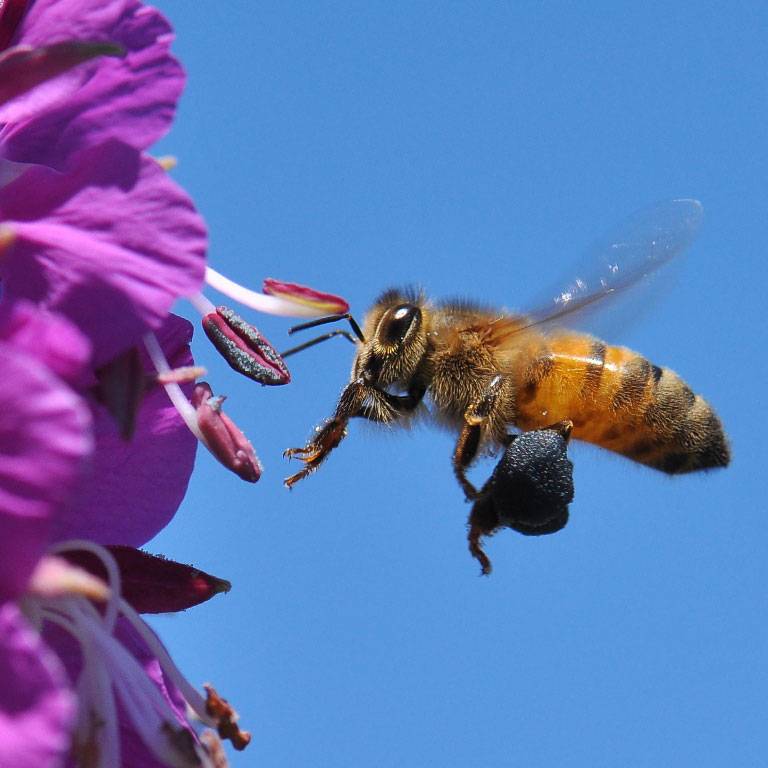The role of bees in biodiversity and agriculture

A bee visits a flower Epilobe legs are in charge of precious pollen that will allow the plant to reproduce
Bees and flowers are closely related, their relationship in the form of exchanges: are mutually beneficial.
Bees feed on plants by collecting pollen and nectar and contribute to pollination by sexual reproduction, so the survival and the development of 80% of species of flowering plants.
Pollination is the transport of pollen from one flower to another enabling fertilization and therefore the reproduction of many plant species
There are basically two types of pollen vectors said the first consisting of abiotic natural elements: water, wind, gravity, and the second called biotic vector: insects and animals in general.
The wind is the pollinator for 10% of the species. Animals take over for the rest, and especially insects.
The flowers attract visitors mainly with nectar and pollen and loyalty with their morphology, their bright colors and fragrance.
Some plants are pollinated by birds, bats or even rodents, but these are by far the insects are most active in this spot.
Hymenoptera, especially bees, occupy the dominant place. They are involved in the pollination of more than 200,000 plant species qualified mellitophiles flowers.
It is believed that the effectiveness of pollination carried out by bees played a key role in the diversification and evolution of flowering plants by allowing sexual reproduction in environments where the wind was not a proper vector. They have considerably increased the chances of cross-fertilization, synonymous with biodiversity.
In the current context of environmental despoliation the pollination activity of bees is more than ever essential to the survival of the natural vegetation.
But there is one area where the bee contributes that we never quite measured.
Without bees, there is sexual reproduction mellitophiles species, their ability to produce fruit that would be at risk.
The importance of bees in agriculture is significant because a good crop pollination is necessary for optimal seed production and fruit quality.
the intensity of pollination, defined as the number of pollen grains deposited on the stigma of a flower, directly affects its fate and the characteristics of the fruit or seeds derived therefrom.
In many fruit including melon, for example, it was shown that good pollination resulted in a better appearance of fruit with flesh for a more elevated sugar content.
It's the same for strawberries, in the absence of bees fruit are small, distorted and tasteless.
This effect on fruit can also be found in seeds, and on rapeseed and sunflower good pollination leads to a higher content in the seed oil.
Arboriculture, field crops and market gardening, seed production would be applied first to the disappearance of bees.
In purely economic terms, a recent study on the scale of The EU has made it possible to quantify the economic impact of bee pollination has 14.5 billion euros a year for major crops which man feeds and depend directly on the pollinating insect activity. This represents approximately 10% of the value of this food production. This demonstrates unambiguously the vulnerability of agriculture faces the decline of bees.
It is difficult to accurately measure what would happen to our planet if unfortunately bees were to disappear, but there is every reason to believe that this scenario of the blackest in the history of humanity bring us closer to the end of our civilization.
Save the bees!
